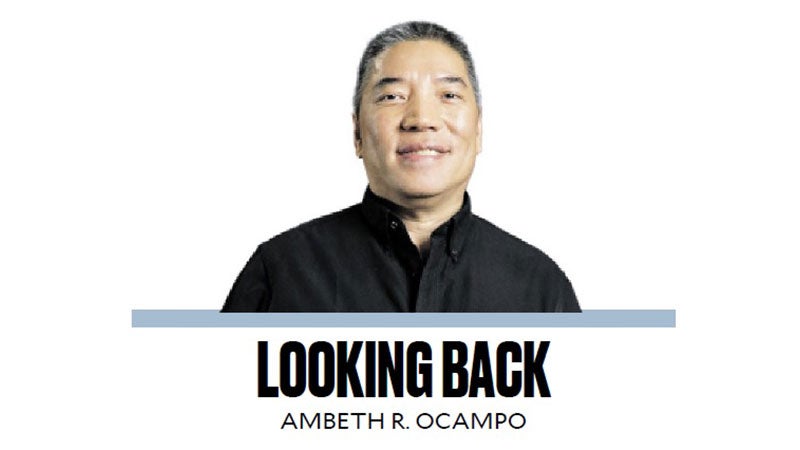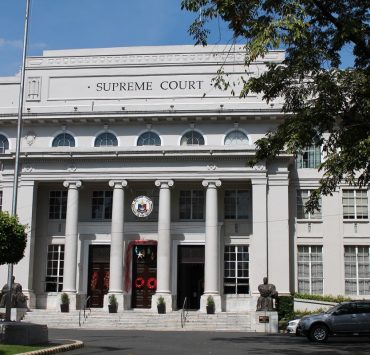Historical amnesia

The Philippines has a lot of holidays. This year, we have 21 nonworking days that do not seem restful for workers like me. Would it be more efficient, and relaxing, if Filipinos were given a three-week vacation in one go, rather than having the 12 regular holidays and nine special nonworking holidays spread out throughout the year? Following the so-called “holiday economics,” we were given a long weekend by moving Bonifacio Day this year from Thursday, Nov. 30, to Monday, Nov. 27, leading to a lot of comment on watering down the remembrance of the man who began the 1896 Philippine Revolution resulting in the end of almost four centuries of Spanish colonial rule.
Some holidays cannot be moved, even with the best or most practical of intentions, like religious holidays: Christmas, Good Friday, and All Souls’ Day. Other holidays are fixed in stone like New Year’s Day and Independence Day. With the flourish of Diosdado Macapagal’s pen, Independence Day 1962 was moved from July 4 to June 12. It was a paradigm shift, instead of sharing the United States’ Independence Day, we took on our own based on the June 12, 1898 declaration of Philippine independence in Kawit, Cavite.
Bonifacio Day is celebrated on the hero’s birthday, while Rizal Day is commemorated on the day of his martyrdom. I got into trouble years ago by proposing that we move Rizal Day from Dec. 30 to June 19. I argued that we should celebrate life rather than death. Having organized official Rizal Day ceremonies, I realized that it was not well commemorated falling between Christmas and New Year. It did not help that official wreath-laying had to occur on or around 7:05 am, the time Rizal was shot, because most citizens were still in bed enjoying the cold December mornings. Having Rizal Day on June 19 would underscore its significance coming a week after Independence Day. I also proposed that the opening of classes be set on or around June 20, after Rizal Day. The significance of Dec. 30, however, was that we should remember the day Rizal gave his life for his country.
In 1996, I attended the Bonifacio Day ceremonies organized by the City of Manila, literally at the foot of the monument to Andres Bonifacio by Guillermo Tolentino, erected between the iconic Manila Post Office and the Manila Metropolitan Theater. Then Manila Mayor Alfredo S. Lim and Vice Mayor Lito Atienza were in formal barong Tagalog accented by a Katipunero hat. Nobody came in the white camisa de chino and red pants associated with the so-called “Great Plebeian.” The Tolentino monument (both in Manila and Caloocan) depicts Bonifacio in an embroidered barong rather than the camisa de chino, and he is armed with a bolo and a revolver. Shortly before the program started, Nick Joaquin came in growling audibly, “Where are the masses?” People pretended not to hear him, dismissing him for being rowdy so early in the morning because of San Miguel beer. As Joaquin shouted his call for the masses, I looked around to see city employees and officials in attendance, the workers and progressive groups with their red flags and fiery speeches would have their commemoration later in the afternoon. They assembled on the steps of the Manila Post Office before marching on to Mendiola. They were not allowed to pass nearby Malacañang that was on, forgive the pun, red alert.
Over at the Bonifacio Monument in Caloocan, the president of the Philippines or a high-ranking national official designated as the president’s representative traditionally leads the wreath-laying so the warm bodies there would be city employees on the grounds, and national government officials on stage. If the “masses” Joaquin was looking for that day assembled in Caloocan, they would be held at bay by police and presidential security until the end of the official program when they were free and welcome to have their own program by the monument.
While history is often an act of remembrance, it can also be an act of forgetting. We erect monuments to remember, but we overlook them and forget. We have holidays to remember, but we sleep in late and go to the mall and forget.Bonifacio is commemorated on Nov. 30, his birthday, rather than May 10, 1897, the day of his death because we don’t want to be reminded that Bonifacio was swallowed up by the very revolution he started. Unlike Rizal, who was shot by the enemy, Bonifacio was sentenced to death for treason by a military court under a revolutionary government headed by Emilio Aguinaldo. Official commemoration highlights Bonifacio’s cry of independence and the tearing of the cedula. Official commemoration and the holiday downplay the fact that Bonifacio was executed in Maragondon, Cavite, by fellow Filipinos. History, to use a current social media term, is complicated. To quote Apolinario Mabini, “God grant we do not forget such a terrible lesson, learnt at the cost of untold suffering.”
—————–Comments are welcome at aocampo@ateneo.edu
Ambeth is a Public Historian whose research covers 19th century Philippines: its art, culture, and the people who figure in the birth of the nation. Professor and former Chair, Department of History, Ateneo de Manila University, he writes a widely-read editorial page column for the Philippine Daily Inquirer, and has published over 30 books—the most recent being: Martial Law: Looking Back 15 (Anvil, 2021) and Yaman: History and Heritage in Philippine Money (Bangko Sentral ng Pilipinas, 2021).





















